Text
How to Determine the ROI of Account-Based Marketing
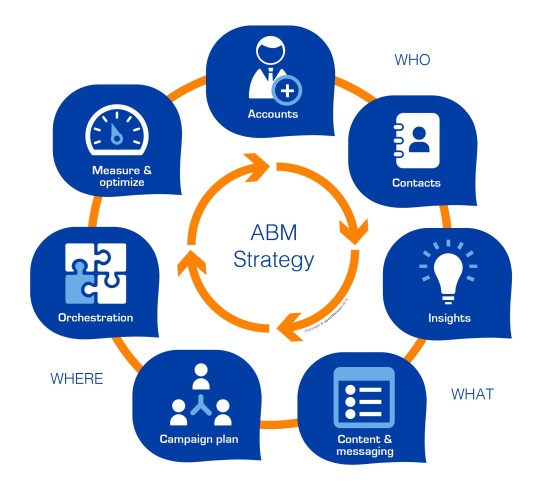
The more detailed and particular you can be with each consumer regarding marketing and sales, the better. Consumers want to feel valued and recognized by businesses, which is why personalization methods are so successful.
Account-based marketing (ABM) is when you target contenders by locating a point of contact or persona inside an organization that you feel you will be able to serve best, cultivate a long-lasting relationship with them, and provide an ever-widening variety of services to the account. You have the chance to develop more targeted messages as you track your client's progress through the buyer's journey, and you can also gather better data to enhance their experience and boost customer lifetime value in the future.
ABM reduces the length of the sales cycle, and increases lead conversion rates overall. 97% of organizations that adopt an ABM strategy see more significant ROIs than any other marketing method, according to research from the Altera Group.
The challenge that emerges in this situation is demonstrating how much ABM aids. Calculating and reporting ROI has always been a significant difficulty for marketing teams. Since it is highly individualized and requires a lot of data for segmentation, account-based marketing strategies are also sometimes fairly labor-intensive to create and implement.
How can your team ensure that you receive a detailed report on the real return on investment for account-based tactics made by your company?
Make your aims and goals clear.
Setting a target for every approach to achieve is the only way to determine whether it was successful. Setting attainable goals and targets for ABM that are based on your team's skills and current performance is essential.
To find the metrics that might require improvement, start by looking at your present scores from any marketing methods you are doing, whether they are account-based or not. To determine whether or not ABM is demonstrating to be more effective than earlier marketing techniques, you'll also need to have precise figures for comparison.
Put a defined price on each campaign.
Setting budgetary constraints for your plans is necessary after establishing your objectives. Once more, it's critical to maintain realism and balance your goals and what is feasible. On a $100 budget, don't anticipate million-dollar outcomes.
The following step is to give each piece of material that will be a component of your plan a predetermined price. This comprises the expense of publishing and billable hours for content development.
To calculate an accurate ROI, you must be clear about the precise cost of each piece of content or marketing campaign.
Determine the important metrics
Most firms concentrate on indicators that increase revenue, such as lead generation or boosting conversions. These are unquestionably essential goals, but you should look at account-specific chances, such as impressions, engagement, and brand emotion. Although they can be a little more challenging to quantify, they are nevertheless important goals that businesses should pay attention to.
As you establish these goals, take your ROI into account. A conversion, of course, is a direct return, but just because a marketing effort does not result in an instant financial benefit does not mean it was a complete failure. Before them to be qualified as leads, clients often need to interact with your brand 7 to 13 times. Therefore, increasing brand awareness and expanding your audience might eventually benefit your bottom line.
Track closely and adjust along the way
Estimating the potential impact of your efforts is difficult. Monitoring your material's interaction, coverage, and emphasis is one of the most significant ways to appraise it. For instance, it's simple to tally the accounts that have downloaded your eBooks or followed your social media profiles.
Pay close attention to these data and keep an eye out for trends and spots when they begin to decline. Adjust and evaluate the outcomes if specific content pieces aren't generating the desired results until you identify the best approaches.
Excel at ABM
Like any marketing strategy, account-based marketing will need to be rinsed and repeated until your marketing team discovers the perfect combination that resonates with your target prospects. The final objective is to connect with and convert the most significant number of accounts with the least resources. To do this, you must
Collect and evaluate data that will enable you to identify and convert the best-fit funds.
Be sure of how you'll calculate the ROI of your ABM efforts.
Set KPIs that are comparable to your past marketing efforts or other tactics.
Keep metrics under constant review as you expand and improve your attribution approach.
What distinguishes your ABM-related metrics from your conventional ones? How protracted does it take you to locate and convert accounts? What tangible effects will this have on your bottom line? Please share your opinions with us if you have any experiences.
For more information, please contact us here.
1 note
·
View note
Text
Everything You Should Know About Corporate Events
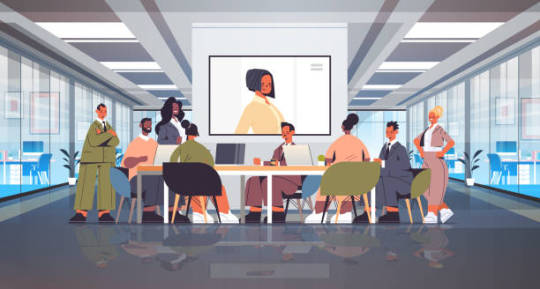
Events are frequently organized in a business setting to convey company strategy, alter employee behavior, introduce a product or service, inspire, develop, or recognize workers, or affect how clients see the brand on the outside.
They frequently serve to unite team members, assist more prominent marketing or sales objectives, reward team accomplishments, or amuse senior officials.
What is hosting a corporate event?
However, corporate event planning encompasses more than just meeting preparation. Even though conferences and meetings might make up the majority of your workload, you might also be asked to plan corporate hospitality, client entertainment, conventions, exhibitions, and employee events, including incentive travel reward programs, team building activities, motivational events, receptions, parties, and charity fundraising days.
Organizing and carrying out a good business event takes a lot of work. Typically, it takes multiple phases and several organizational tasks over several months.
Corporate events can include business conferences, internal training seminars, team outings, and client hospitality. It is consequently preferable to evaluate business events in terms of their scale when planning decisions.
Event Objectives:
"What is the purpose of the event?" When a corporate event is requested, this should be your initial query. You'll be able to plan more successfully and express your ideas in a way your superiors will comprehend if you get a thorough grasp of the deliverables that important stakeholders want to attain.
After determining whether the event's goal is, for instance, to raise brand awareness, communicate business strategy, reward and motivate, or introduce a new good or service, you can set objectives, implement the necessary metrics to monitor progress, and identify the attendees' demographics and expectations.
Planning, advertising, and staying within your budget are made much simpler when your event's goals and objectives are well stated.
Event goals ought to be SMART.
Specific: What is the intended result, and when must it be realized?
Measurement: Return on Investment, Return on Objectives, or Both: Which is Measurable?
Achievable: Make sure the event's goal can be genuinely realized; otherwise, top executives will view it as a failure.
Relevant: Throughout the planning process, the ultimate objective must continue to be something that ties back to the company's goals.
Time-bound: Plan for the event goal to have been met within two-time frames if it is time-bound. This can call for more training sessions or a follow-up event to evaluate the results of the first.
Corporate Event Planning Checklist:
Utilize the aforementioned best practice recommendations in addition to these few actions to guarantee successful corporate event planning.
· Establish the main aims and overall goal you hope to achieve with your event.
· Determine the audience to ascertain their expectations for the event's takeaways and tone of speech.
· Discuss how the occasion fits with the wider business plan. What are the company's long-term goals?
· Make a thorough record of every budget line item involved in the event lifecycle.
· Establish a planning committee and assign roles.
· Schedule time for planning sessions.
· Select the day or dates when the event will occur.
· Create a rough budget based on supplier quotations and historical costing.
· Make a list of the conditions for the site.
· Compare locations and make a deal.
0 notes
Text
How to Execute Events on a Reduced Team
It might be intimidating to plan a team-building event, especially if you've never done it before. You may follow seven measures to streamline your preparation efforts and create a spectacular event. Whether you're planning a team-building activity for your group for the first or the tenth time, it might feel like there is never enough time to get everything right. Let's face it: on top of your regular obligations, it might seem complicated to attempt to organize a fun event on your own that will go well and be enjoyed by everyone.
The 7 Steps You Can Take to Simplify Event Planning for In-Person Events.
Determine your timeline: An event planning timeline is a breakdown of all the phases and steps that go into preparing an event, organized chronologically. It's a long-term event timeline that considers the up to 12-month lead-in period before an event actually occurs.
Set up your planning team: It can be challenging for one individual to organize a whole team-building event, as you may already know or maybe discover. One person could hardly assume complete responsibility for the entire situation because there are so many moving elements. By assembling a planning team, you may assign obligations and simply collect the feedback of your coworkers to assist you in making decisions for your event. Utilize resources like flip charts and thought maps to make the most of group brainstorming sessions! By assembling a team, you also have the choice of designating someone else to assume leadership if your workload is too significant or you will be unavailable while the planning is being done.
Define your goal: It might be easier to guarantee that your team-building exercise is enjoyable and successful if you have a clearly defined target or purpose. You might not know where to start, though, unless your supervisor has expressly stated your team-building activity's aim.
The five "W" questions are a fantastic place to start when defining your objective: Who? What? Where? Why? When? Try to be as authentic and thorough as you can while responding to each question. Here are some examples of reactions to the five "W" questions:
Who: A 45-person sales team
What: A fun pastime
Where: the city of New York
Why: As a celebration of a fantastic quarter.
When: In August.
Combining all of the above, the following goal for a team-building exercise becomes clear:
Our 45-person sales team deserves some fun in New York City this August to celebrate a great quarter.
4. Put together your guest list: Often, creating your guest list will be as simple as tallying the number of employees in a certain division, as in the case of the "sales team of 45 individuals" example from above. On other situations, selecting the participants for the team-building exercise could take a little more time.
Here are three crucial inquiries to consider while making your guest list if you're unclear who will attend the occasion:
· Is this an obligatory activity? Or is attendance open to all?
· How many guests can the location and budget accommodate at once?
· Are there any employees there who may have a disability? Or will remote workers also be welcomed?
You should be able to create a general picture of who will be attending based on your responses to these questions.
5. Create a detailed budget: Setting your goals and objectives is the second most important stage in the planning process, followed by creating an event budget. A budget is a thorough projection of the financial outcomes of your event. It aids in cost and revenue management and evaluates the performance of your meeting or event.
You should follow the following actions to achieve this:
· Establish your budget for the entire event.
· Consider the past.
· Conduct research to comprehend the market.
· Make a comprehensive plan.
· Obtain support from key players.
· Set up specific line items and secure vendors.
· Getting more specific with line items.
· Set your expected costs in stone.
6. Devise a logistic checklist: You may concentrate on the more minute details of your event's day-of logistics once the most significant aspects have been chosen. You can avoid essential information on the day slipping through the cracks by creating a thorough checklist.
Consider putting the following elements on your logistics checklist:
· Transportation: Will the organization provide transportation, or will attendees be responsible for making their own way to the activity?
· Food & Drinks - Does the business provide food or beverages?
· Liability Waivers - Will attendees be required to sign a liability waiver in order to attend?
· Lodging – Will participants spend the night away from the venue?
· What to Bring - What information must attendees be aware of beforehand? Should they carry clothing for rainy conditions, for instance?
· Special Circumstances - What accommodations are required for workers with injuries or disabilities?
7. Develop an event day agenda: The likelihood is that your team will be curious about what they are doing for your team-building exercise. You may plan out the day with the aid of an agenda, which will also make it simple for you to inform your colleagues of the event's schedule.
Everything that workers will be doing should be noted on your agenda, including meeting locations, activity length, and employee arrival and leave hours.
0 notes
Text
The Importance of Securing the Manufacturing Supply Chain
The network of all the individuals, organizations, enterprises, assets, duties, and technology breakthroughs involved in creating and delivering an item is known as a supply chain. An entire supply chain is included, from the distribution of raw materials from the supplier to the producer to the final delivery to the customer. The network of all the individuals, organizations, enterprises, assets, duties, and technology breakthroughs involved in creating and delivering an item is known as a supply chain.
Supply chain security has gained significant attention in recent years. High-profile supply chain hacks that have targeted some of the largest companies in the sector have shown to be complex tasks to overcome. Due to the nature of supply networks and manufacturing in general, every disruption in production causes delays that propagate up the supply chain. As we've experienced in the past year, these delays can have a significant impact on seemingly unrelated businesses that nonetheless depend on those products with a shortage of semiconductors. Moving raw materials between manufacturing facilities and transforming them into final items are made simpler by the supply chain. The manufacturer then ships and distributes the goods to a store or straight to the customer.
The supply chain makes it convenient to move raw materials between production facilities and turn them into finished goods. The manufacturer then ships and distributes the goods to a store or straight to the customer. Threats to today's supply chains include theft, sabotage, terrorism, cyber-attacks, piracy, etc. Specific security measures can protect supply chains even when risks cannot be eliminated.
In addition to offering complete and individualized supply chain management solutions to businesses, Holistic is a pioneer in providing anti-duplication devices and solutions. Nowadays, duplication is a constant challenge to businesses. Any step in the supply chain is susceptible to counterfeiting or replication. Although physically examining gaps or mistakes in a company's whole supply chain might be difficult, monitoring the entire supply chain is a mammoth undertaking. Different types of technology have been used to protect supply chains from the threat of duplication. The usage of track and trace technology, which closely monitors the movement and amount of the product across the supply chain, is, nevertheless, the most efficient among them. Products are given a customised barcode or QR code from Holostik in addition to a security hologram. This aids not only in the product's authentication but also in the adoption of other IT-enabled solutions like supply chain management, inventory control, reward management, and track and trace. A QR code or bar code can be used for digital authentication on a specific product, pack container, or pallet. Due to the actual hologram and QR code present, this security product's standout feature is that it is difficult to copy. Holographic and digital authentication solutions are available from Holostik, a pioneer in anti-counterfeiting technologies, to secure supply chains. Digital authentication tools integrated into its security holograms contribute to the firm and its product having a multi-layered security strategy. Physical Threats:
Traditional forms of harm, including theft, sabotage, and piracy, are physical dangers to your supply chain security. Threats of this nature might originate both inside and externally. An external risk may be the hijacking of a cargo ship by pirates, for instance. However, physical dangers can sometimes develop, such as when irate staff members steal or sabotage merchandise. To counteract these physical risks, there are several strategies, including:
Utilizing cutting-edge track & trace technology to get real-time updates on the status of different shipments
Utilizing advanced locking mechanisms on cargo and tamper-proof seals
Carefully screening employees focusing on values to lower the risk of internal threats are just a few examples.
When inspecting goods entering each node of a supply chain, use standardized inspection techniques and mobile technology apps.
Although it is hard to eradicate physical risks to supply chain security, implementing even one of the measures mentioned earlier may significantly reduce your risk of falling victim. Examine your supplier chain and consider where you are most exposed. Sometimes the solution is crystal clear; other times, not so much. Working with a 3PL like LTX to identify possible supply chain issues and improve them is a beautiful starting step.
The Internet and Cyber Threats:
Once upon a time, a business's only concern was with physical supply-chain dangers. There are new and maybe more subtle hazards as a result of the development of the internet and systems that depend more and more on software. The internet has greatly aided supply chains, both domestic and international. However, the growth of supply networks dependent on the internet has opened up new potential attack vectors. The greatest supply chains may be brought down by a few determined and talented hackers. The Petya ransomware cyberattack, which affected businesses throughout Europe and the United States, is one recent incident that made headlines. There are several more instances of cyber-related attacks, including computer hardware that is provided with malware already installed, malware that is purposefully or unintentionally introduced into software, and counterfeit computer gear. Despite how terrifying this may appear, there is no need to fear because there are several strategies that can be used to counter cyber-attacks, such as:
Ø Ensuring that each participant in your supply chain has received certification that they have met the compliance standards you have established. This reduces the chance that an attacker may use a third party to access your supply chain.
Ø Perform risk analyses on prospective partners and vendors. As a result, there is less chance of an inside attack.
Ø Clearly state who is the owner of certain data being utilised or collected within the supply chain. In terms of data security and appropriate usage, this fosters a sense of ownership inside your firm.
Ø Streamline communication and information exchange channels across the supply chain. This stage facilitates the dissemination of the standards necessary for appropriate data usage and enhances the identification of any potential issues or assaults.
There will always be malicious hackers attempting to sabotage businesses and their activities in the modern world. You may strengthen the security of your company's supply chain and lower risks by following the above-listed measures
1 note
·
View note
Text
How To Choose A Destination For Physical Events In India?

Finding the ideal location is a unique art form, even though planning a memorable event involves many different elements. The right location guarantees that your event will go as planned, that visitors will be pleased and delighted by their experience, and that they will have a positive impression of your business or the clients you represent. The appropriate location may also streamline the planning process and help you get all the "extras" you need to leave a lasting impression, such as linens, flowers, and connections to other suppliers who can help you make your event a reality. The best physical event services in India also contain a few outstanding venue facilities.
The foundation of an outstanding venue is built on the following five components:
Capacity: Although it seems straightforward, this decision is crucial. The location isn't ideal if it can only hold slightly more attendees than you had hoped. While drop-off is to be expected, you don't want the space to be excessively congested, to prevent a good flow of movement across the space, or — god forbid — to make your visitors feel uncomfortable in any manner. If the latter is the case, then the only lasting memory of the evening will be discomfort. But on the other side, be sure a room isn't going to be too big for the task at hand by doing your research. For example, a small client dinner wouldn't be well received in an ample event space. A cosy corner table in the middle of the establishment, is a better choice because it will give your guests a taste of the atmosphere and energy of the eatery while providing a private enough space for business meetings and the ability to customise the table and area to your preferences.
Location: Try to choose a location that will be convenient and appealing to the visitors you hope to draw. Suppose it's an after-work networking event; attempt to schedule it close to or along the path people frequently take to get home from work. Try to choose a location that is a destination unto itself if it is a weekend event, such as one that is on the sea, has a rooftop lounge, or has views of the sun setting. While you can't find the ideal position for everyone, you may choose a location that's convenient to reach, isn't solely accessible via the region's busiest road, and is generally not off the beaten path. This one is significant and should not be taken lightly.
Technological Components: While some events are more high-touch than high-tech, you should still ensure the event venue has the technology necessary to meet your demands as efficiently as possible. Is the audio-visual equipment in the room of good calibre and user-friendly? is one example of a question to ask. Are there any screens accessible to display presentations or to assist brand the space with the logos and branding of your clients? Is there a microphone accessible for speakers to address the audience? If you want background music, can you pipe in a well-prepared playlist of songs? Although it sometimes receives a bad rap, technology can create an event's ambience and ambience unlike anything else.
Food & Beverages: We are what we eat, and happy guests are those who are well-fed and full. The success of the event depends on your choice of food (hors d'oeuvres versus a sit-down meal) and beverage (full bar, wine pairings or alcohol-free). When money is tight, you might decide to host a party without alcohol, but limiting the alcoholic options to one glass of bubbly or one unique cocktail can significantly save costs without becoming a cheapskate move. If the location is amenable, perhaps expenses can be postponed by collaborating with an alcohol sponsor. Your venue's on-site event manager can frequently serve as your go-to resource for selecting the menu that best suits the needs of your event and your financial constraints. Don't be hesitant to negotiate and to draw on their knowledge. You never know what you can obtain just by asking at the venues because they want your business and are willing to work with you.
The "Wow" factor: This method has helped me design some of my most successful events to date: simply pick the location with the most "wow" appeal. Perhaps it involves purchasing the restaurant, which is fully booked on Saturday nights through the end of the year. Alternatively, it could involve choosing the eatery that was recently named "Best Restaurant of the Year" or "Best Chef." You should get toasty if the venue you're considering is one that people are raving about on social media, in local publications, and at the water cooler. Additionally, arranging a large gathering at these venues can be simpler than arranging a square table for two.
Finding the ideal venue can make the process much more effortless, even though there are many components to preparing a memorable client event. This "menu" of five factors is a beautiful place to start when choosing the location that will elevate your client gatherings.
The destination's attraction and originality may influence your delegates' impressions of your corporate event. The experience for your attendees can be enhanced by including local cuisine, tourism, and culture in your event.
If you want to know more about the companies that conduct best Physical Event. Please do visit the website.
0 notes
Text
Top 8 Reasons Why Virtual Events Do Not Give Desired Results?

Although it hasn’t always been simple, virtual events have done wonders for businesses in keeping in contact with their consumers during the epidemic. The difficulty of involving people to leave a lasting impression is one issue event planners deal with. Since many virtual events have failed to successfully transition this into an online setting, the majority of us now miss the more intimate ambiance of in-person gatherings.
Fortunately, by selecting a virtual event platform that aids sponsors and organizers in seeing the long-term advantages of going online, the majority of virtual event issues may be overcome. Because they make sense in the modern, globally connected corporate context, virtual events are, after all, here to stay. Virtual events will continue to let companies connect with participants remotely, all around the world, even if live events do make a comeback. According to statistical information, more than 75% of event planners stated that once they resume their operations, the bulk of their events would be hybrid, including both physical and virtual components.
Lack of technical expertise: One out of every five event planners, on average, shy away from planning virtual events because they lack the necessary resources and technological expertise. It is important to consider a number of factors when preparing a completely online or hybrid event, from determining the best event tech platform and streaming tool to choosing the best attendee interaction approach. First-time virtual event planners are likely to run into even more difficulties, with their inexperience serving as a major bottleneck. The best course of action for an event planner is to take part in a few online conferences to get a sense of how things are done, learn from them, and then begin organising his or her own event.
Lack of technological assistance: There is no dearth of event management solutions currently available. However, not all of them can be used for virtual events equally. When technical help is scarce as well, the issues worsen. An organiser working on their first remote conference is unlikely to find everything obvious; also, (s)he may not be the ideal person to respond to participant technology questions. It does not take long for the entire guest experience to decline with little or no help from the event IT vendor, which inevitably results in negative press.
Lack of interaction opportunities: Virtual events are becoming more important in the pandemic-ravaged planet. However, it is still true that these online conferences cannot provide the same level of networking opportunities and exposure as an in-person conference. Live polling, surveys, and Q&A are only partially effective for virtual events since they don’t provide the necessary peer-to-peer networking for attendees. Nearly half of all event planners globally express serious concerns about the lack of live participation choices. Organisers should use virtual event platforms with built-in live chat and, preferably, with a social community building component in order to address this difficulty. Additionally, there should be an easy way for partners, sponsors, and exhibitors to interact with attendees.
Lack of a two-way communication medium: There are several opportunities for the audience to take part in a live event, including breakout sessions, coffee breaks, planned meetings, and Q&A sessions. When the same event is held virtually, these chances are lost. With the live or recorded recordings playing and the spectators having very nothing to do, many online event platforms organise events that often feature one-way communication. In order to prevent such dull conditions, it is necessary to “make people talk” — through live Q&A sessions, session feedback and opinion sections, polls, virtual breakout rooms, QR code scanning, social communities, and more. To better analyse audience behaviour, it is also a good idea to monitor and collect user activity logs (if the event tech provider offers that capability).
Concerns about the sponsor not being understood: There are valid reasons why sponsors and partners frequently express reluctance to participate in online events. The event site (and, for that matter, all venues) are devoid of exhibition booths, billboards, and other forms of advertising. This can be a serious issue since, without sufficient sponsorships, it may not be possible to organise the virtual event on a large enough scale. The smartphone app being used to hold virtual events should make it simple for sponsors to engage with all attendees and promote their newest goods and services (once again, the social media channels are really helpful for this). For exhibitors, the same holds true.
Absence of a single, comprehensive solution: This can be a difficult task. Each of these digital goods, including specialised event app builders, ticketing systems, Q&A platforms, and others, makes the claim to offer best-in-class services. However, employing various platforms to host a virtual event would inevitably make things difficult and drive-up overall costs (since numerous memberships will be needed). Therefore, choosing a platform that offers end-to-end solutions and has all the necessary functions built in makes a lot of sense for event planners. For the event, one subscription ought to be sufficient. Lower costs mean fewer technical worries.
Lack of imagination in event marketing: Organisers frequently advertise virtual events as forced substitutes for real events (pandemic-induced replacements). As a result, the intended audience can consider these events to be “dumbed-down copies” of live events that aren’t always worthwhile to attend. The organisers must use their creativity to emphasize the benefits of participating in the virtual event and how attendees may get the most out of these gatherings. The finest social media platforms for this are LinkedIn, Facebook, and Instagram, however planners may also think about sending customized mass emails. It’s critical to alter public perception of virtual events, which should be portrayed to be significant in and of themselves (and not just a poor cousin of a live event).
Disregard for the technological constraints: Even if an event management platform has the most cutting-edge capabilities, it cannot be expected to completely duplicate the experience of attending a live event. While most event planners are aware of this reality, issues can arise when attendees’ expectations are not adequately managed. The audience should be given access to the whole schedule, features, and resources right away, along with a detailed description of each resource’s capabilities. Many event planners also make the mistake of obsessing about technology limitations to the point that they miss the wider picture of content strategy and audience engagement.
If you want to know more about the best virtual events conference services in India or Top virtual event management companies in India. Kindly contact us here.
0 notes
Text
TOP 10 BENEFITS OF SOCIAL MEDIA FOR BUSINESSES

How can we leverage social media sites for promoting business growth? This is the most commonly posed question by company owners who are still attempting to figure out how to get their business on Facebook, Twitter, LinkedIn, and other social channels in various forums and groups. It may appear daunting at first at a glance when we look at the number of social platforms there are. Blogs, wikis, forums, picture and video sharing sites, social bookmarking sites, social networks, and more!In this modern tech-driven era that we live in, where business operations are being fueled by technology at every touch-point, harnessing social media for business is no longer optional. It’s an essential way to reach your customers, gain valuable insights, and grow your brand.
What are the advantages of utilizing social media in the workplace? Consider the fact that there are currently over 4.5 billion active social media users worldwide. If you don’t incorporate social media in your digital marketing strategy, you’re losing out on a simple, inexpensive, and effective way of reaching almost half of the global total.Now that we have established that social media platforms are indeed an amazing and affordable way to build up a brand and drive business success. Let us take a look at some notable benefits of social media for branding.
1. Boost brand recognition: Platforms like Facebook, Instagram, and Twitter are obvious places to contact new and highly targeted potential clients, with over half of the world’s population using social media. Do you believe that on social media, individuals only connect with businesses they already know? According to a study, 85 percent of social media users think the platform helps them find new items.
2. Portray your company’s image: One of the most important advantages of social media for business is the opportunity to make genuine human relationships (also known as Meaningful Relationship Moments). Showcase how your products have helped clients achieve their desired outcomes. Authenticity fosters confidence. In turn, trust increases marketing receptivity and leads to new business. And social media is the ideal place to be authentic! Demonstrate how you’re living up to your brand principles, how your product functions in practise, and how you prioritize the needs of your staff and consumers.
3. Build brand reputation: While there has been a recent trend toward suspicion of government, NGOs, and the media, the 2021 Edelman Trust Barometer reported that business is a trusted organisation with a 61 percent trust rating. People rely to companies for knowledge and insights, and there’s no better place to convey it than on social media. Regardless of your sector, social media may help you promote your brand as a thought leader — the go-to source for knowledge on issues relevant to your area. When it comes to establishing your thought leadership, LinkedIn — particularly the LinkedIn Publishing Platform — is a terrific place to start.
4. Maintain a high level of awareness: According to a Research Center research from 2021, 70% of social media users log into their accounts at least once each day, and many people (49%) admit to monitoring social media numerous times per day. Seven out of 10 Facebook users claim they use the site on a daily basis. Keep your social postings amusing and useful, and your fans will be happy to see fresh content in their feeds, keeping you top of mind so you’re the first place they think of when they’re ready to buy.
5. Boost website traffic: Posts and adverts on social media are effective strategies to generate visitors to your website. Sharing great content from your writeups or websites to your social networking sites is a great way to get new readers as soon as it’s published. For example, Architectural Digest showcases exceptional stories in its Instagram new feed prior to directing its followers to the link to read the complete information. Participating in social conversations may also help you get awareness, attract new followers, demonstrate your knowledge, and generate traffic to your website.
6. Lead generation: Potential clients may express interest in your business and products through social media in a simple and low-commitment method. Many social networks provide advertising formats expressly tailored to capture leads because lead generation is such an essential advantage of social media for company. ABC Pvt Ltd. staff, for example, use Linkedin lead adverts to allow anybody curious in knowing further about specific bakery projects to do so with just a few clicks. The advertising generated 4.3 times more sales leads than the previous year at a cost that was two times less than more standard digital prospecting efforts featuring real estate ads.
7. Boost revenue: Your social media accounts are an important aspect of your sales funnel, which is the process of converting a new contact into a client. Social networks will become increasingly significant for product discovery and ecommerce as the number of individuals utilizing social media continues to rise and social sales technologies expand. In is now time to connect your social marketing activities towards fulfillment of your sales objectives.
8. Content promotion: Using social media to promote your content is a terrific method to get your clever, well-researched information in front of new people, demonstrating your knowledge and expanding your following. Make sure you have a content marketing strategy in place to get the most out of social media for company.
9. Fly viral: Your material is exposed to new audiences — their friends and followers — as people like, comment, and share your social postings. This notion is taken a step further when it becomes viral. Your material travels over the internet when individuals share it with their networks, and their networks share it with their networks, possibly resulting in hundreds or even millions of shares. This exposure is especially valuable because, in a world where there is far more material than any single individual can possibly read, a friend’s social sharing functions as a type of pre-screening. Of course, becoming viral is difficult, but it would be nearly impossible without social media.
Dhruv Mehra is the author of this article. If you want to know more about “How to improve social media presence ”or “Brand Reputation”. Please visit our website.
0 notes
Text
Best Webinar Service Provider Companies
Meet the industry experts in live Virtual Events, Product Marketing, Internal Training @ Redefine Marcom. Reach Us Now for more information @ [email protected]
https://www.redefine.in/services/webinar.html

0 notes
Text
Virtual Event Management Companies In India
Meet the industry experts in Video Production, Creative Shooting, Virtual Trade Shows, Panel Discussion Sessions, and Case Study Photography @ Redefine Marcom.
https://www.redefine.in/services/virtual-event.html
0 notes
Text
Roadshow Event Management Services in Delhi
Events and brand activation services, RWA activation are integral parts of marketing strategy. We are here to lend a hand and upscale your companies’ profit.
https://www.redefine.in/services/livecom.html
0 notes
Text
Best Digital Marketing Services in India
Give your business a headstart through best-in-class Digital Marketing Services like: email marketing ORM, SMO, web designing . Contact Us today @ 8800099587
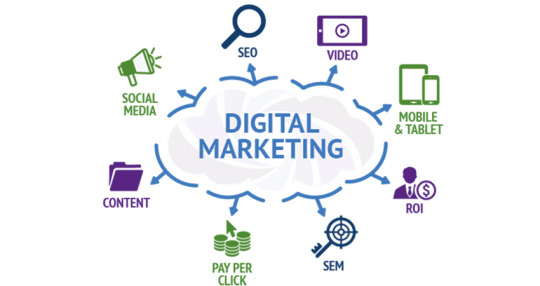
https://www.redefine.in/services/digital-marketing-services/index.php
0 notes
Text
Tele-Calling Companies for Event Management
If you want to have platform for best live online event marketing services Like-training & team development, press conference meeting. Contact @ [email protected]

https://www.redefine.in/services/demandcom.html
0 notes
Link
Now as we dive deeper into this, let me remind you that we all have participated in events at some point, be it large scale or small scale, personal or professional. Of course, the participation is fun and entertaining, however organizing one requires a lot of efforts. Venue hunting, inviting the guests, arranging for logistics, and now virtual events too, requires a lot of time and efforts. This need has opened huge business opportunities within the event management space globally. Be it handling the events effectively or higher creativity and smoothness, individuals and organisations have their own reasons to hire event management companies. I make it easier for you by listing some of the best ones from India here.
0 notes
Text
RWA Activation Agencies In India
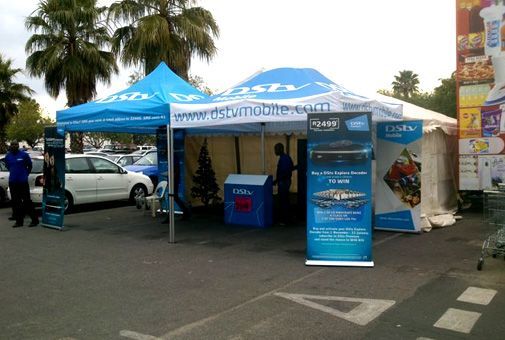
RWA is the Residential Welfare Association, which refers to activities carried out in residential areas to generate publicity about a specific service or product of a business. They prove to be one of the most effective branding strategies in a business as they bring together a small-scale gathering of a society or focussed group that serves as an important promotional platform. They also have immense potential as the engagement involved in it not only helps the brand interact with customers but also provides a conducive environment for families and individuals or just targeted groups of customers to interact and have quality conversations for the larger good.
These activities include planning mega-events, and encouraging promotions through tempting activities or games, sales, data collection and other such promotional activities. Events are highlighted through game shows, cultural events, musical events as well as food stalls.
Nowadays so many cities in India, especially the metropolitans, have cooperative housing societies. Such societies have become a forum for promoting brands or even launching new products or services. RWA activation is an ideal option for B2C (Business-to-consumer) interactions, bringing your product, service or brand to the end-user directly. Active engagement where the target audience can participate makes the customers understand the product or service better.
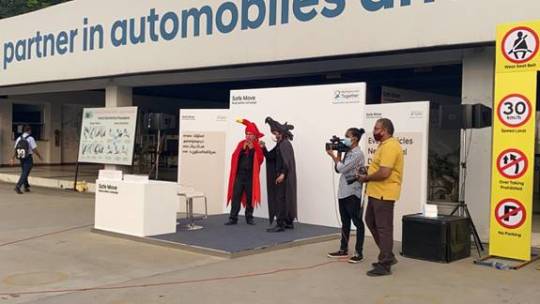
They include several other benefits too, which are as follows.
· Creates awareness instantly
RWA Activation directly communicates and interacts with the customer and hence creates awareness of the business or service among society or its focused group instantly. Mind you, awareness is the first and foremost step if you want your target audience to avail of your services or try your products.
· Builds customer database
We discussed above how RWA Activation activities help in direct communication and engagement. Apart from that, it also helps in collecting and building customer databases with almost zero chances of error since there’s direct contact with the other end. This in turn facilitates business leads and helps brands in the long run.
· Evaluate business strategy
Since there is the direct involvement of customers in RWA activation, it helps businesses communicate with the target audience and understand how they perceive their product or service. They can on the spot understand the pros and cons of the service or product, take feedback and focus on improving their offerings.
Now that we have discussed the benefits of RWA activation, let’s explore some of the best agencies in India that stand out from the rest.
· Redefine
The first on the list has to be the best one. And so, Redefine Marcom tops the list. It is a 360-degree marketing service provider that offers an array of marketing services including RWA activations to numerous industry verticals. Their process for brand activations is well-researched, organised and creative in order to deliver the best to you. The appreciation from their huge clientele speaks volumes about their performance over a period of time. Their perfectionism is evident here; in their own words, “We have been successfully achieving our aim with proactive strategies, diligent efforts and passionate zeal of our teams who perfectly understand the needs of the clients and do every bit to fulfil them.” Hence, look nowhere else because this is the perfect pick if you wish to outshine. Thank me later!
· Tophawks
Amongst the best RWA activation companies, Tophawks help advertisers and brand promoters across all industries to connect with the residential societies. Through RWA activation, advertisers get the maximum viewership for their products and services within the desired marketplace and target segment. Their prime focus remains to advance your brand and take it a notch higher with the best and most experienced marketing skills.
Their activation kits possess differentiated qualities. For instance, their society activation kits are skilfully made to cater to both outdoor and indoor requirements and can sustain all-weather conditions as they offer dust-free and weather-proof features. Hence, you can surely consider them.
· Krono
In their words, “We have a vision that is not only limited to creating awareness but to bring a new wrinkle to your business by creating conversions and providing ROI driven marketing solutions.” Based in Mumbai, they transform it into reality by conducting thorough research, taking care of every little detail and then taking your brand to various housing and other residential societies within the city suiting the brand’s requirements. They say, “Connection forms the basis for every communication. Krono, your benevolent companion is here to help you connect to the critical masses and scale up your business. We have tailored the art of walking that extra mile towards knowing your market and your audience to reach out to them.” Their client list ranges from telecom to FMCG and lifestyle, among others.
· Exicon
Exicon Group is a diversified marketing solutions provider which was founded in 2000. It has its own brand activation arm that focuses on subtle marketing techniques to activate your brand. They opt for various innovative brand promotion channels to achieve the desired objectives for your brand. Experiential marketing coupled with advanced technology is their USP, which proves to be beneficial for its partners. They believe, “We unite brands and people across the world through meaningful connections that drive business success. Since our inception, we have been analysing the business benefits of building meaningful connections for brands. This unique global framework drives everything we do and empowers businesses worldwide by offering new solutions for favourable business achievements.”
· Muses Marketing
They are a branding and activations agency with 10 plus years of collective experience in the BTL business. Working with both start-ups and corporates over years, they have taken brands to RWAs, rural areas, malls, markets, corporates, and a lot of other geographies PAN India. They say, “We have in house fabrication unit, promoters on retainer-ship and exclusive tie-ups with media which makes sure the activation gets executed perfectly and without a glitch.”
RWA activation proves to be a boon for every brand for more reasons than one. Keeping in mind several factors right from serving better connections to transparent reviews, these recommendations have been listed to serve you the best. Whenever you want to plan any brand activation ideas, go through our list and book your favourite.
For more information on Residential Welfare Association (RWA). Please visit the website.
0 notes
Text
The Future of Corporate Training

Employees are the true assets for any organization. They are the ones whose efforts help businesses achieve desired results and set new goals. Therefore, organizations work towards upskilling and enhancing their workforce through corporate trainings as they understand that a skilled and motivated employee has a higher tendency to yield better results.
These trainings are a great way to enhance collaboration, communication, and cooperation among employees. It helps you develop new skills, work on your soft skills and align your targets and goals with the brands perspective. Keeping employees updated about technology and the relevant industry is another add-on corporate training is known for. This in turn boosts employee productivity, morale and decision-making capabilities.
It is also important to note that the training process starts with the employee induction, as s/he comes to terms with their roles, duties and targets of the firm, and continues till s/he is associated with the organizations as each and every level demands an updated and enhanced work approach.
While there are several benefits and usage of corporate training, we need it now more than ever given the remote working conditions where the employees are not in touch physically for long durations. Now, let’s discuss the most important aspect i.e., corporate training methods. With the advent of new technologies and change in content consumption pattern, corporate training methods have undergone digital transformation. Organizations are embracing technology now more than ever as they want to catch hold of the changing trends, and this might only accelerate in the years to come. Let’s see what the future of corporate training holds.
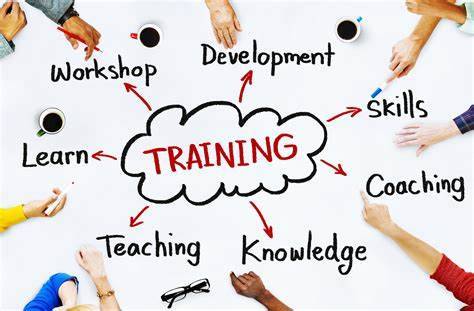
Here are a few factors that determine the future of corporate training:
Tech-based training: During the whole pandemic session, as work continued remotely, we witnessed how companies were forced to move online in order to train and upskill their employees. We also saw how internal training methods such as webinars and personalized web sessions too centre stage. It is the technology that made remote work possible and still does, that too, in a smooth and flexible manner.
AI and VR led learning: With the advancement in Artificial Intelligence (AI), Virtual Reality (VR) and other such domains, businesses are bound to transform the training industry and keep pace with the emerging trends. These developments are changing the way we experience learning. AI-led learning is going to be quicker, better, and more innovative as it holds the capability to process complex data within minutes. Gone are the days when VR was confined to pilot trainings. It is now expanding its wings to other industries including the training landscape. It gives opportunities to develop skills for true-to-life scenarios without facing real risk. Safe and exciting much!
Personalized Training: The technology world holds more power than one can imagine. Now, there is no one-size-fits-all approach. Employers need to focus and cater to the individual needs of the employees as their learning area might vary. But before we jump onto this, it is important to understand the needs of the employees. It is advisable to prepare a set of questions regarding their expectations, roadblocks and goals to get a clear picture of their specific and varied problems and expectations. We then bring AI into the picture as it can train employees with a lasting personalized impact. It automatically records the actions or decisions made by an employee and suggests the way forward. It can also advice you with an analytical approach forming a personal connect.
Soft Skills Training: This might look like a debatable point but it’s actually not. No matter how much hard skills are prioritised over the soft ones, but increasingly organizations have realised its importance and are considering this as their prime focus. Creativity, problem-solving ability, adaptability, teamwork is some of the top skills employers are looking for. In fact, soft skills such as critical thinking, complex problem-solving, resilience, flexibility, creativity, originality, initiative and emotional intelligence comprise a chunk of the top skills and skills groups that global employers see as rising in prominence in the run up to 2025, according to the Future of Jobs 2020 report.
Microlearning: Gone are the days when employees were physically expected to attend a 9-5 training session with a diary and pen, filling pages one after the another while noting down every small detail explained during the training. The focus is now shifting to microlearning where the message conveyed is short, crisp and targeted. It helps to retain information quicker and more effectively as the required attention span is less. I would credit this as the future of corporate training because it allows flexible learning and can easily fit in between busy meeting schedules and relaxing holidays.
Creating a Collaborative Learning Approach: The traditional top to bottom hierarchal learning approach is now outdated. Earlier, only the top-level professionals and executive were the deciding factor for corporate trainings as the process was more centralized and power lied in the hands of few. But now and in the forthcoming years, companies are focusing on creating a collaborative learning approach where every employee plays a crucial role and participates in the decision-making process, paving way for a decentralized learning approach. Now, any employee can ask for a particular learning or can volunteer to create a course s/he excels at. This not only helps in imparting training but also enhances coordination, cuts external cost and is easier to produce.
Corporate training has evolved in the past few years and this tech-based learning is one of the enhancements that is going to stay in the long run. New employees are onboarded with online trainings, sometimes even without physically stepping into the offices. Existing employees are upskilled with curated online courses. In this scenario, companies have realised the ‘tech will teach’ benefit and are adapting to this new world. It goes without saying that the future of corporate training is definitely going to be governed by AI and VR given the impact these technologies can have on skill development. They have the ability to offer more personalized and specific training. We’ll discuss the how’s in detail further. In fact, Metaverse has some interesting revelations to make in this direction. “Metaverse mixed-reality learning experiences represent disruptive innovation that can significantly optimize training, development, and real learning. With companies increasingly moving to remote or hybrid workplace environments, executives not only appreciate the need for, but are wholeheartedly embracing, new approaches to train, sustain, and develop their teams in order to stay agile and competitive,” says Ed Beltran, CEO of Fierce Conversations, a global leadership development company that’s pioneering new e-training and communication paradigms, as recorded by an American Business Magazine.
The application of AI not only helps the current employees but the future ones and other employees at the workplace too. The bots record and store the data entered by an employee once. Further, whenever it comes across another user tracking the same path, it predicts and suggests a path that may turn beneficial for the current user based on the earlier recorded experience. Hiring managers of some of the global companies feel have been emphasising that possessing soft skills such as learnability and problem solving is key to having a successful career with them. As automation changes the job market, 92 per cent of talent professionals and hiring managers agree that candidates with strong soft skills are increasingly important, said the
LinkedIn 2019 Global Talent Trends Report
. In fact, 89 per cent said bad hires typically have poor soft skills, as per a skills management platform. Hence, companies are recognising soft skills as top tier qualities while making sure their employees inculcate and experience these in their everyday operations. An international news agency reported that the Global Microlearning market accounted for $1.30 billion in 2018 and is expected to reach $4.65 billion by 2027 growing at a CAGR of 15.2% during the forecast period. The numbers clearly reflect it is a win win situation for micro learners in the years to come. It’s going to be a new era of experiential learning and development. Technology, AI, VR and personalized training is going to create a space where corporate training would be more rapid, smooth and collaborative but we might miss the human touch.
If you wish to know more about Which Companies to Reach for Corporate Event Planning. Please visit the website
.
0 notes
Link
0 notes